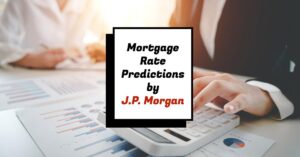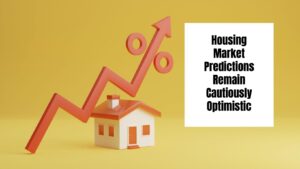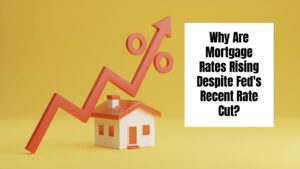Hey there! Thinking about buying a home in California? The California housing market is a wild ride right now, and it's not always easy to figure out what's happening. Let's dive in and untangle some of the recent twists and turns.
California Housing Market Stalls: What's Next for Homebuyers?
Recent Trends: What's Going On?
The California Association of REALTORS® (C.A.R.), a super reliable source for housing data, just released their September 2024 report, and things are…interesting. September saw a dip in home sales, hitting a nine-month low. Even though interest rates are down, buyers are still a little hesitant. This means fewer people are buying homes. It’s a complex situation with lots of moving parts. Let’s break it down.
- Sales Slowdown: The number of single-family homes sold in September was 253,010 on a seasonally adjusted annualized rate. That's a slight 3.4 percent drop from August and only a 5.1 percent increase compared to September 2023. This is significant because it indicates slower activity in the market. It's below the 300,000 threshold for the last two years. In my opinion, this reflects continued buyer caution.
- Price Changes: The median home price in September was $868,150. While that's up 2.9 percent from September 2023, it's down 2.3 percent from August. This shows some price softening, which is pretty normal for this time of year. However, the year-over-year growth shows that prices are still increasing, albeit at a slower rate, offering some relief to potential buyers.
- Regional Differences: California's vast size means the market isn't uniform. Some areas are doing better than others. For example, sales increased year-over-year in the Far North (7.2%), San Francisco Bay Area (5.1%), and Southern California (1.1%). But the Central Coast (-1.9%) and Central Valley (-1.6%) saw decreases. This is important for buyers who want to target specific areas that fit their budget and lifestyle preferences.
Why the Hesitation? Let's Talk About the “Why”
Several factors contribute to this buyer hesitation.
- Economic Uncertainty: Let's be real – the economy is a bit of a rollercoaster these days. People are worried about job security and inflation. If the economy gets worse, many buyers would rather wait than put themselves at risk.
- Interest Rate Fluctuations: Even though rates are down from last year, they are still historically higher than in the past. The unpredictable nature of interest rates makes buyers hesitant, as they fear further hikes. The possibility of more rate adjustments keeps people waiting on the sidelines.
- Inventory: C.A.R.'s report shows a steady increase in the inventory of available homes. This gives buyers more choices but can also make them more likely to wait for a better deal. More inventory is good for consumers; it adds more selection and allows for better negotiation power.
My Opinion on Recent Trends
As someone who has been following the California housing market for many years, I think this slowdown is a temporary adjustment. It's not a total market crash; it's more of a pause. The improved inventory and slightly lower (but still elevated) interest rates could make the fourth quarter an interesting time for buyers. It is, however, important to monitor economic trends closely.
What Does This Mean For You?
So, what should you do? Well, that depends on your situation.
- Buyers: If you're looking to buy, the current market offers some advantages. You have more choices, and the price increases have slowed down. However, keep in mind that interest rates could still fluctuate. Waiting too long, however, might mean missing good opportunities and potentially higher prices in the future.
- Sellers: If you're selling, be prepared for a slightly slower market. The current inventory levels mean more competition. Pricing your home competitively will help you make a quick sale.
A Deeper Dive into the Data
Let's look at some more specific data from the C.A.R. report:
Table 1: September 2024 California Housing Market Key Figures
| Metric | Value | Year-Over-Year Change |
|---|---|---|
| Sales (Seasonally Adjusted) | 253,010 | +5.1% |
| Median Home Price | $868,150 | +2.9% |
| 30-Year Fixed Mortgage Rate | 6.18% | -7.20% |
| Unsold Inventory Index | 3.6 months | +0.8 months |
County-Level Breakdown: The report also shows significant variations at the county level. Some counties, such as Lassen (78.6% increase in sales), saw huge year-over-year sales increases, while others experienced substantial drops, with Mono county showing a 50% decline. This highlights the importance of location-specific research.
What's Ahead?
Predicting the future is never easy, especially in the housing market. However, based on current trends and economic indicators, here's my outlook:
- Moderate Price Growth: I expect home prices will continue to grow, but at a more moderate pace than we've seen in the past couple of years.
- Increased Inventory: The current increase in inventory should continue.
- Interest Rate Uncertainty: The interest rate environment will continue to impact buyer behavior, potentially creating volatility.
In summary, California's housing market is a wild ride! Things have slowed down lately, but that doesn't mean the whole thing is going to collapse. It's more like a breather after a super-fast growth spurt. Whether you're looking to buy or sell, you really need to do your homework. Keep an eye on what's happening in the market and definitely get a real estate agent who knows their stuff. They can help you navigate all the craziness.
Recommended Read:
- California Housing Market Forecast 2025-2026: Insights for Buyers
- California Housing Market Predictions 2025
- Will Housing Prices Drop in 2025 in California?
- California Housing Market: Prices, Trends, Forecast 2024
- The Great Recession and California's Housing Market Crash: A Retrospective
- California Housing Market Cools Down: Is it a Buyer's Market Yet?
- California Dominates Housing With 7 of Top 10 Priciest Markets
- Real Estate Forecast Next 5 Years California: Boom or Crash?
- Anaheim, California Joins Trillion-Dollar Club of Housing Markets
- California Housing Market: Nearly $174,000 Needed to Buy a Home
- Most Expensive Housing Markets in California
- Abandoned Houses for Free California: Can You Own Them?
- California Housing in High Demand: 19 Golden State Cities Sizzle
- Homes Under 50k in California: Where to Find Them?











